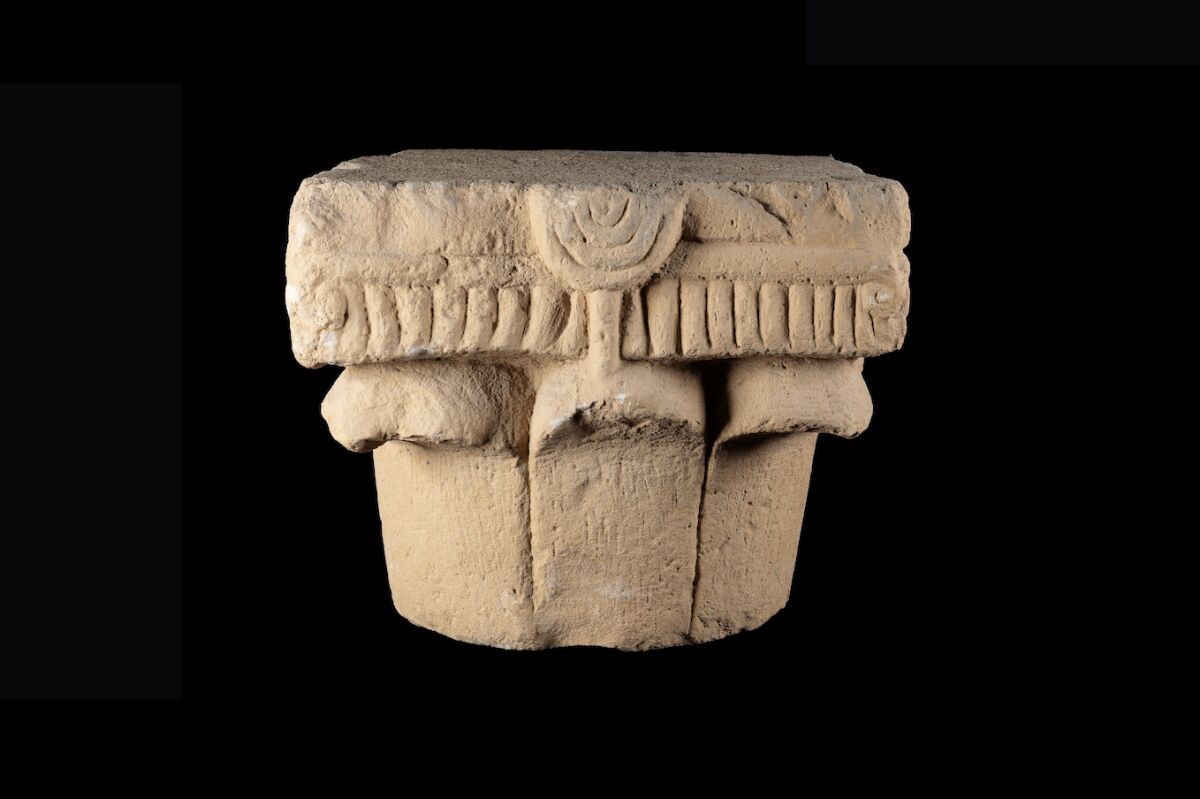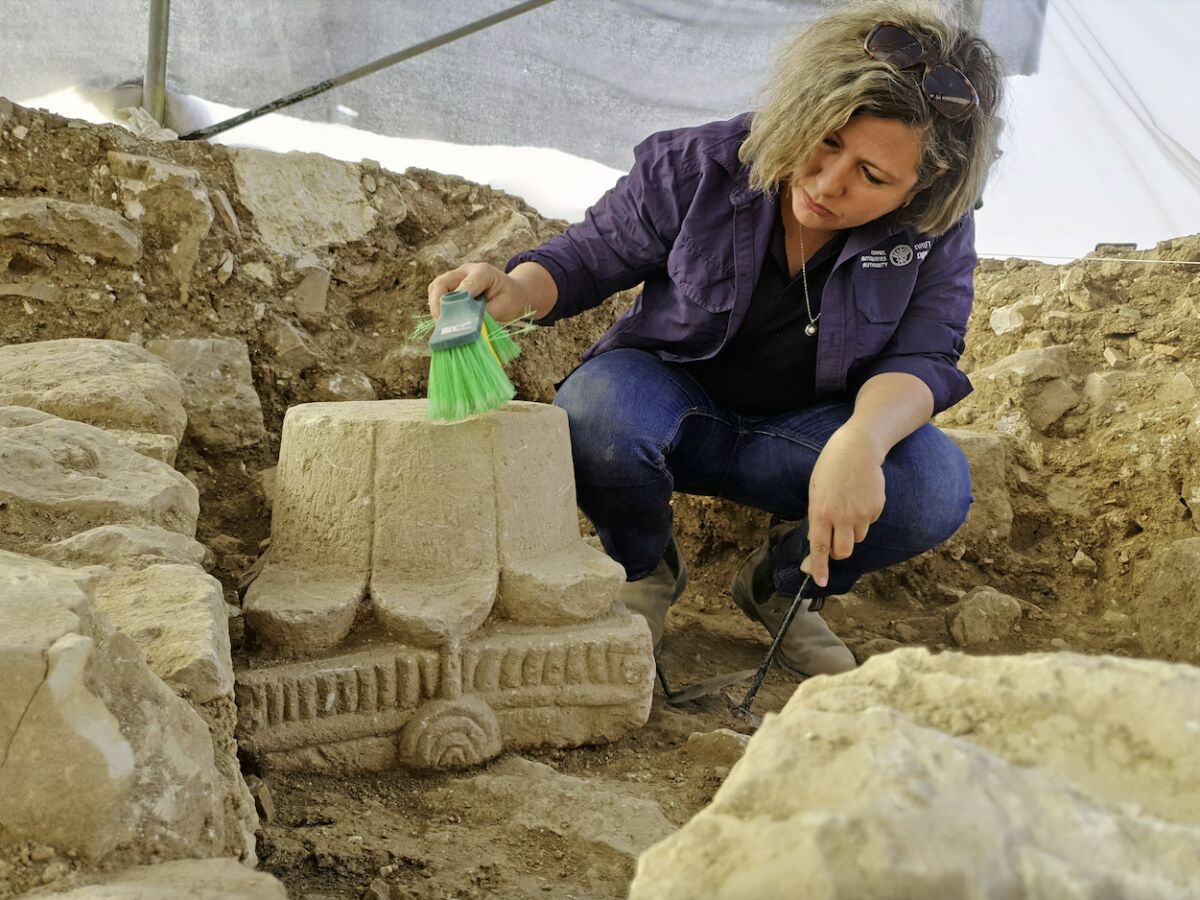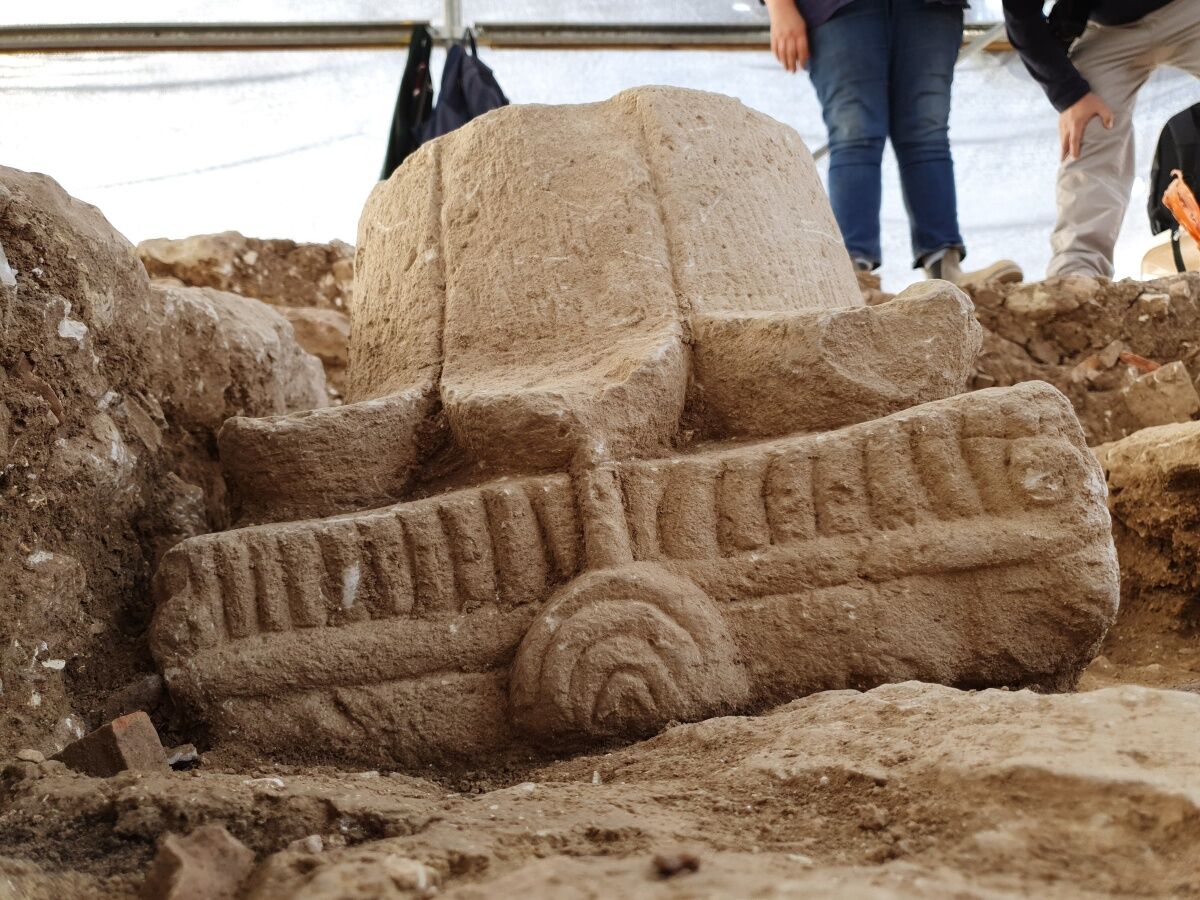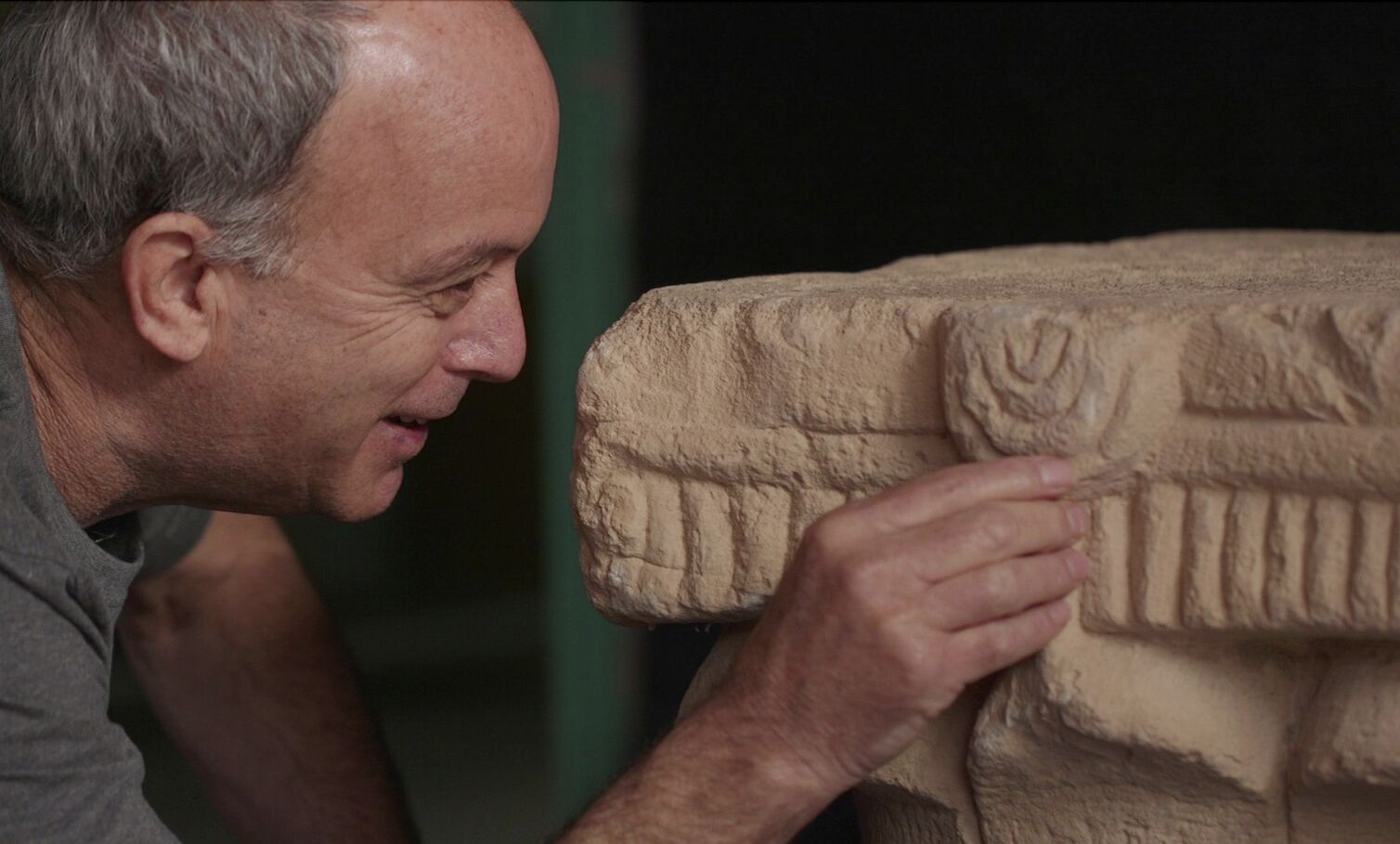
A remarkable, entirely unique stone pillar capital, bearing eight-branched menorah designs, was discovered during Israel Antiquities Authority (iaa) excavations at Motza on the outskirts of Jerusalem. This one-of-a-kind artifact, first uncovered in 2020, has only now been revealed to the public and was put on display at the Jay and Jeanie Schottenstein National Campus for the Archaeology of Israel in conjunction with Israel’s 77th Independence Day.
The capital was found in secondary use, upside down within a Byzantine structure (sixth to seventh centuries c.e.). The original use of the capital, therefore, dates to sometime prior. According to Dr. Uzi Ad and Anna Eirich, excavation directors on behalf of the iaa:
It seems this capital stood atop a column in a magnificent building or on a street, in a late Roman period settlement here (second-fourth century c.e.). From its local context and finds this settlement was apparently populated by descendants of Roman army retirees. If so, what was a capital with a menorah decoration on it doing here of all places—a distinct Jewish symbol? This is a true conundrum.

Dr. Orit Peleg-Barkat from the Hebrew University of Jerusalem—co-director of our own excavations in Jerusalem—is a specialist in ancient architectural decoration. She said:
While Corinthian capitals with smooth leaves were common throughout our region from the late Second Temple through Byzantine periods, the capital discovered at Motza exhibits truly distinctive features. Despite being skillfully crafted, it appears to be the work of an artisan less familiar with architectural conventions prevalent in urban public structures. Most significantly, the upper section—traditionally adorned with a floral motif—instead features what resembles an eight-branched menorah. This is particularly intriguing because seven-branched menorahs typically appear on capitals from synagogues of the late Roman and Byzantine periods, such as those found at Capernaum and Caesarea. The absence of any evidence suggesting a synagogue at this site raises questions about the capital’s original purpose and context.

This mystery only deepens, given the fact that the capital stone had evidently been quarried locally. In the words of Dr. Yuval Baruch, deputy director of archaeology at the iaa, “historical texts supported by archaeological research shows that the Jewish settlement in Judea—and especially in the Jerusalem hills—suffered a great blow as a result of the Bar Kokhba revolt in the second century c.e. In fact, it can be considered eliminated in this region.” What, then, is this menorah-adorned pillar capital doing in this area?
The reason, for now, remains unclear. What is evident is that we have a unique capital, more than 1,500 years old, decorated all around with motifs resembling eight-branched menorahs. Dr. Adi summarized the discovery, saying:
There’s significance here, because … [there is] a sense of national pride when you find a menorah. It’s not certain if the artist intended it that way, but there is tremendous pride in the appearance of a menorah at a non-Jewish site. It is very important to show the public the beautiful finds unearthed in this land, to reveal what came before us here, and the power of the antiquities of this country.

